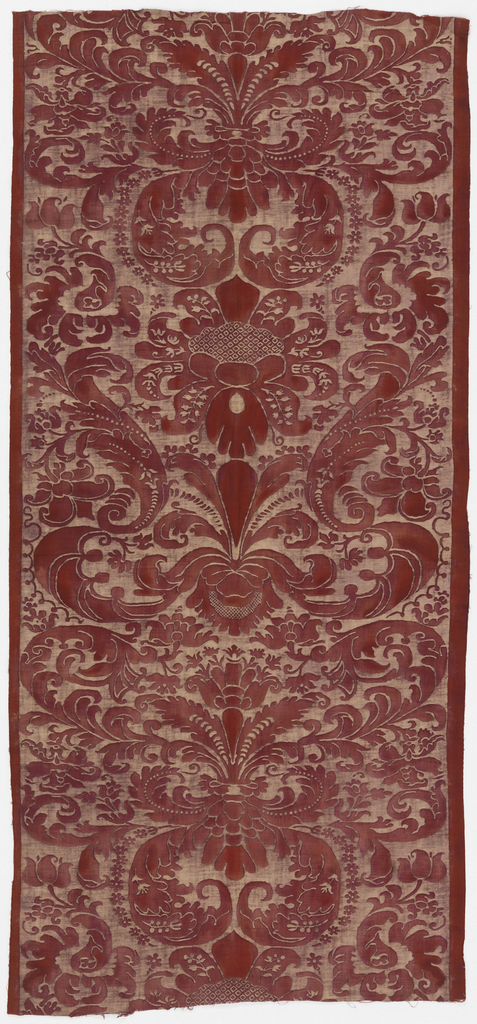Named after the 17th century Italian painter, “Caravaggio” was designed in the spirit of the Italian Baroque with a pattern of pomegranates and heavy vegetal scrollwork foliate. Fortuny achieved the appearance of woven silk damask by printing on a satin weave fabric of long staple Egyptian cotton, which had a natural sheen, and creating depth through layered dye colors. While Fortuny was engrossed with history and preferred the softer colors of natural over synthetic dyes, he also innovated and patented several processes for printing, pleating, and finishing fabrics to create his antique looks through modern means. Because he used a variety of proprietary methods and often several techniques in one fabric, it is difficult to definitively attribute the technique used in each piece. This piece may have been made through a combination of stenciling, discharge printing, immersion dyeing and hand painting.
This narrower width was likely intended as furnishing fabric, but Fortuny and his contemporary decorators also stitched together panels to form wallcoverings that would swathe an entire room in pattern. Part of the continuing appeal of Fortuny’s designs is and was their ability to blend harmoniously in many interior spaces.
